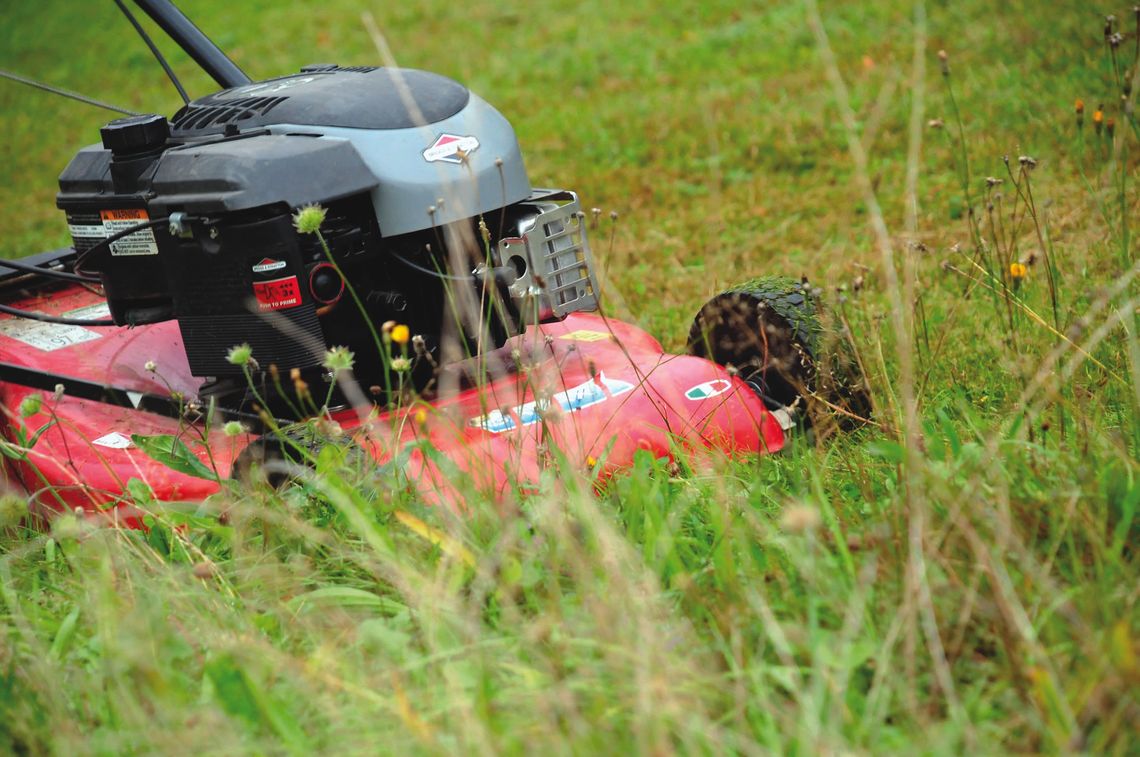Dull blades are not good on your grass and leave a ragged appearance. Good sharp blades cut the grass evenly and make less work for your lawnmower.
Improper mowing heights is still a big problem. Scalping your grass is not healthy for your lawn. Be aware of different mowing heights for different types of grasses. Bermuda grass can stand being mowed at 1 inch, but St. Augustine can’t. St. Augustine should be mowed at 2 ½ to 3 inches. Improper mowing height can unnecessarily stress grass and cause disease problems.
When mowing, objects on the ground (for example- toys, rocks, debris, etc.) can become projectiles when struck by cutting blades. These objects can travel up to 200 miles per hour after leaving the discharge chute on a lawn mower.
Discharge chutes and openings are equipped with a protective guard or deflector to stop objects from becoming projectiles. This can be the plastic flap or metal plate on a lawn mower or the chains on a rotary cutter. The guard should be maintained and kept in good condition to remain effective.
A common and dangerous practice is tying up the deflector to increase grass flow from the mowers chute. This defeats the purpose of trying to reduce a thrown projectile’s speed. Objects can still be thrown out of the discharge; however, the deflector will reduce the speed of the object and the distance the object will travel.
Follow these tips to avoid injury and property damage while mowing:
1. Inspect the area to be mowed. Clear the work area as much as possible before you begin. Pick up sticks, rocks, wire and other debris before you begin to mow.
2. Keep children and bystanders away from the area. If someone or a vehicle is passing by, turn the cutting blades off.
3. Mow in a direction that blows discharge away from people, buildings, vehicles, and roadways. In addition to the obvious injuries to people and possible broken windows & holes in siding from projectiles, grass clippings themselves can be a danger to motorcyclists, and bicycle riders. Glass clippings are often blown on and left on roadways, which is equivalent to ice in the road for motorcycle and bicycle tires. This could lead to serious injuries and even death for those involved.
4. Shut off blade rotation when crossing a sidewalk, driveway or road. Also, always shut off blade rotation when driving the equipment to another area that needs mowing.
Source: Mississippi State University Extension Safety Newsletter, August 2020, Leslie Woolington



Comment
Comments